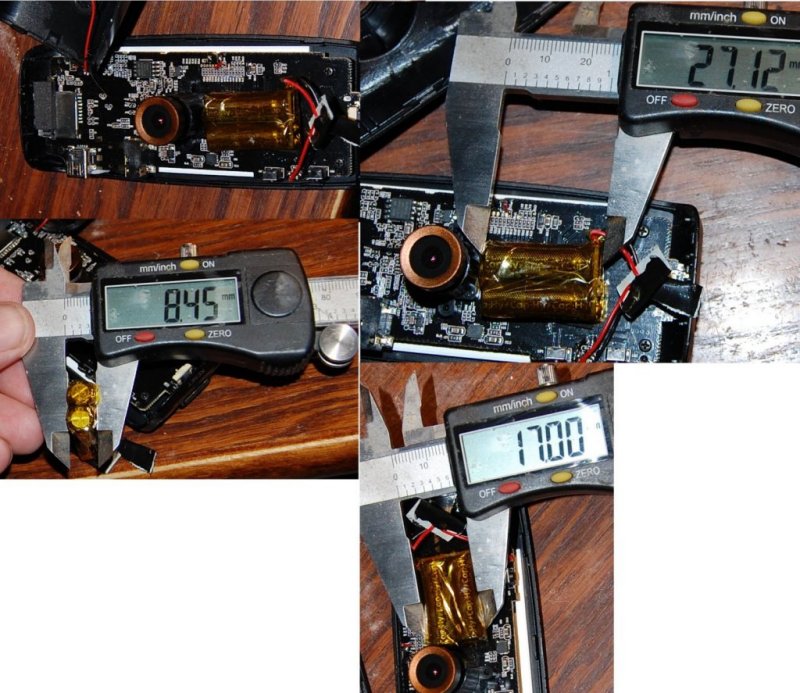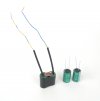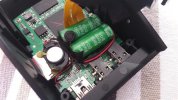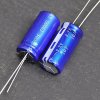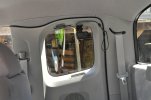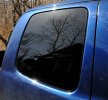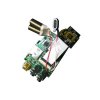Dashmellow
Well-Known Member
- Joined
- Sep 22, 2013
- Messages
- 18,670
- Reaction score
- 19,275
- Location
- Uncanny Valley (●_●)
- Country
- United States
- Dash Cam
- Umpteen
@wrdjr20, thanks for your follow-up.
I do have a few replacement capacitors but no data sheet or part numbers, I'm afraid. I bought the caps from a small seller on eBay as it was otherwise difficult to find small size caps in small quantities from the larger electronics suppliers. The seller calls them "Nano Force" Super Capacitors but I don't know if that is actually a brand name or his own moniker. Smaller super-capacitors seem to be fairly rare when I've looked for them. For example, Mouser Electronics will sell small parts quantities but the shortest 10F caps they sell are 30mm long compared to the 20mm ones I found on eBay. This was typical of the suppliers I checked. The shorter size seemed to work well with how they fit the remote mounting scheme I came up with and now that I think about it, when I purchased them the original plan was to mount them on the outside of the camera body itself but even 20mm proved too long.
As I've said, I am no expert in electronics and indeed some of the technical terms on the Mouser super-capacitor page are kind of over my head but I think I can do what you are suggesting without too much trouble. I'm still unclear about how to resolve the current leakage question though.
When I get a little time I will replace the super-caps in the Gt680W with a battery and see how well the camera is still functioning before proceeding. I am about to embark on a major construction project with my house that will be rather disruptive and time consuming so I'll have to see how it goes with "hobby projects" such as this. In any event, I appreciate your willingness to help me explore this further.
One final thought. So far, you and @outofthebox are the only two to mention the need to balance the super-caps. Other knowledgable folks here have solely focused on the apparent requirement to accommodate for super capacitors in the firmware yet somehow, so far, it seems that installing the caps in the GT680 worked fine with the existing firmware. Of course, that was until the caps failed but they did last 5 weeks. So, is it possible that the firmware has something more to do with how the super-capacitors function?...Or does the firmware simply accommodate for the loss of voltage at shut-down in order to save the last file properly?
I do have a few replacement capacitors but no data sheet or part numbers, I'm afraid. I bought the caps from a small seller on eBay as it was otherwise difficult to find small size caps in small quantities from the larger electronics suppliers. The seller calls them "Nano Force" Super Capacitors but I don't know if that is actually a brand name or his own moniker. Smaller super-capacitors seem to be fairly rare when I've looked for them. For example, Mouser Electronics will sell small parts quantities but the shortest 10F caps they sell are 30mm long compared to the 20mm ones I found on eBay. This was typical of the suppliers I checked. The shorter size seemed to work well with how they fit the remote mounting scheme I came up with and now that I think about it, when I purchased them the original plan was to mount them on the outside of the camera body itself but even 20mm proved too long.
As I've said, I am no expert in electronics and indeed some of the technical terms on the Mouser super-capacitor page are kind of over my head but I think I can do what you are suggesting without too much trouble. I'm still unclear about how to resolve the current leakage question though.
When I get a little time I will replace the super-caps in the Gt680W with a battery and see how well the camera is still functioning before proceeding. I am about to embark on a major construction project with my house that will be rather disruptive and time consuming so I'll have to see how it goes with "hobby projects" such as this. In any event, I appreciate your willingness to help me explore this further.
One final thought. So far, you and @outofthebox are the only two to mention the need to balance the super-caps. Other knowledgable folks here have solely focused on the apparent requirement to accommodate for super capacitors in the firmware yet somehow, so far, it seems that installing the caps in the GT680 worked fine with the existing firmware. Of course, that was until the caps failed but they did last 5 weeks. So, is it possible that the firmware has something more to do with how the super-capacitors function?...Or does the firmware simply accommodate for the loss of voltage at shut-down in order to save the last file properly?
Last edited:

